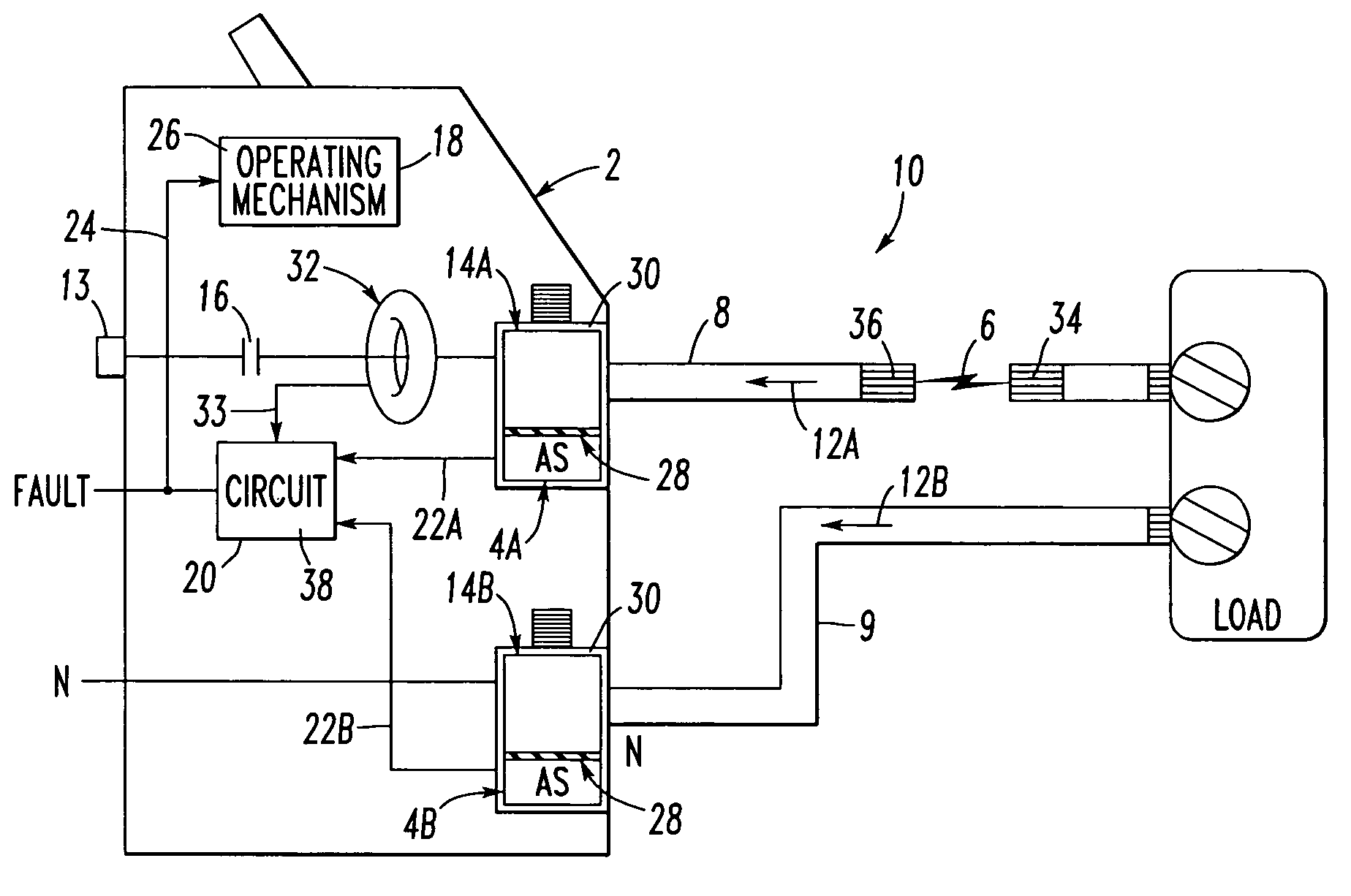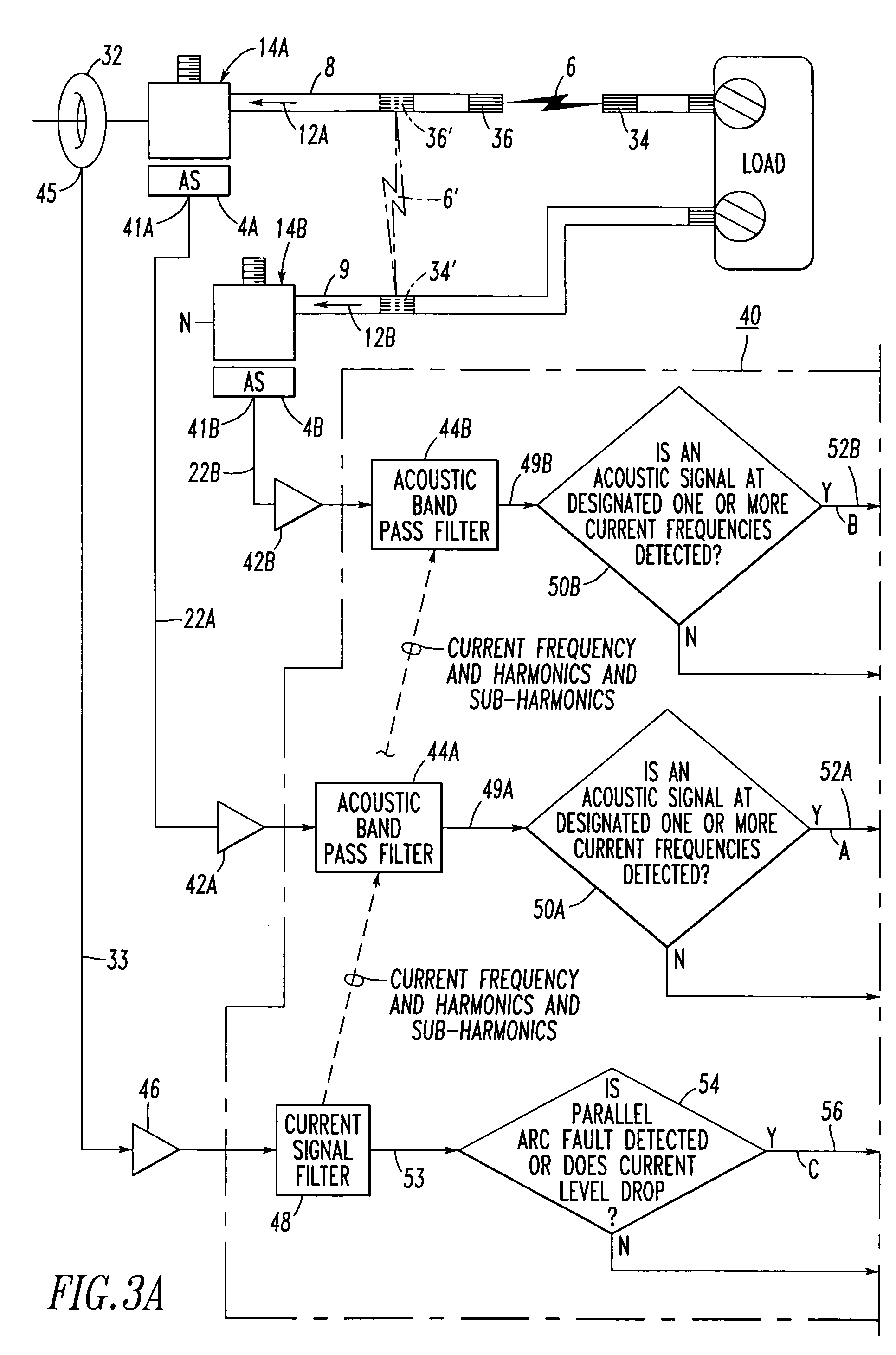Electrical switching apparatus and method employing acoustic and current signals to distinguish between parallel and series arc faults
a switching apparatus and acoustic current technology, applied in the field of circuit interrupters, can solve problems such as false arc fault current signature detection, unintentional arcing condition of electrical circuit, and overload capability of circuit breaker
- Summary
- Abstract
- Description
- Claims
- Application Information
AI Technical Summary
Benefits of technology
Problems solved by technology
Method used
Image
Examples
example 1
[0039]The circuit breaker 2 may be, for example, an arc fault circuit interrupter. The operating mechanism 18 may include a trip mechanism 26, and the circuit 20 may output the detected fault signal 24 as a trip signal to the trip mechanism 26 upon detecting the arc fault condition 6 from the sensed acoustic signals 22A,22B and from the sensed current signal 33.
example 2
[0040]The example acoustic lugs 14A,14B are preferably structured to match the acoustic wave-guide provided by the respective electrical conductors 8,9. The acoustic lugs 14A,14B preferably include suitable acoustic wave-guide properties that couple the acoustic signals 12A,12B from the power circuit 10 to the acoustic sensors 4A,4B, respectively.
example 3
[0041]The acoustic lug 14A includes a voltage (e.g., a line voltage from the terminal 13) structured to be electrically output to the power circuit 10. Since the load-neutral conductor 9 is normally only grounded upstream (e.g., without limitation, at a load center or panel board (not shown)) of the circuit breaker 2, it may have a nominal voltage. The acoustic lugs 14A,14B preferably include a suitable electrical insulator 28 (e.g., a relatively thin insulating polymer or ceramic) structured to electrically insulate the acoustic sensors 4A,4B from the respective conductors 8,9 and the corresponding voltages thereof.
PUM
 Login to View More
Login to View More Abstract
Description
Claims
Application Information
 Login to View More
Login to View More - R&D
- Intellectual Property
- Life Sciences
- Materials
- Tech Scout
- Unparalleled Data Quality
- Higher Quality Content
- 60% Fewer Hallucinations
Browse by: Latest US Patents, China's latest patents, Technical Efficacy Thesaurus, Application Domain, Technology Topic, Popular Technical Reports.
© 2025 PatSnap. All rights reserved.Legal|Privacy policy|Modern Slavery Act Transparency Statement|Sitemap|About US| Contact US: help@patsnap.com



